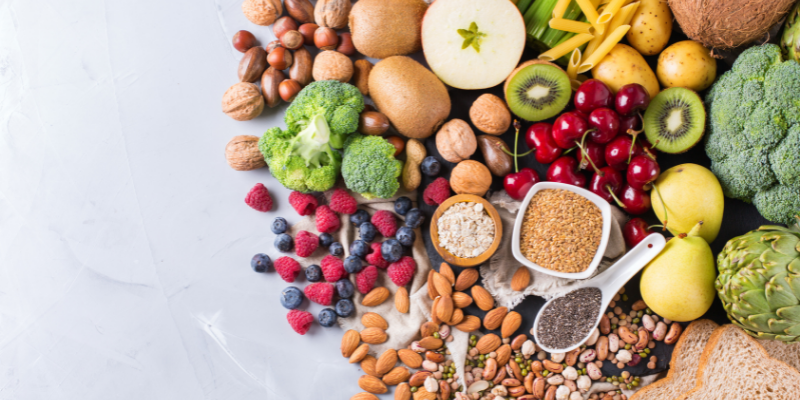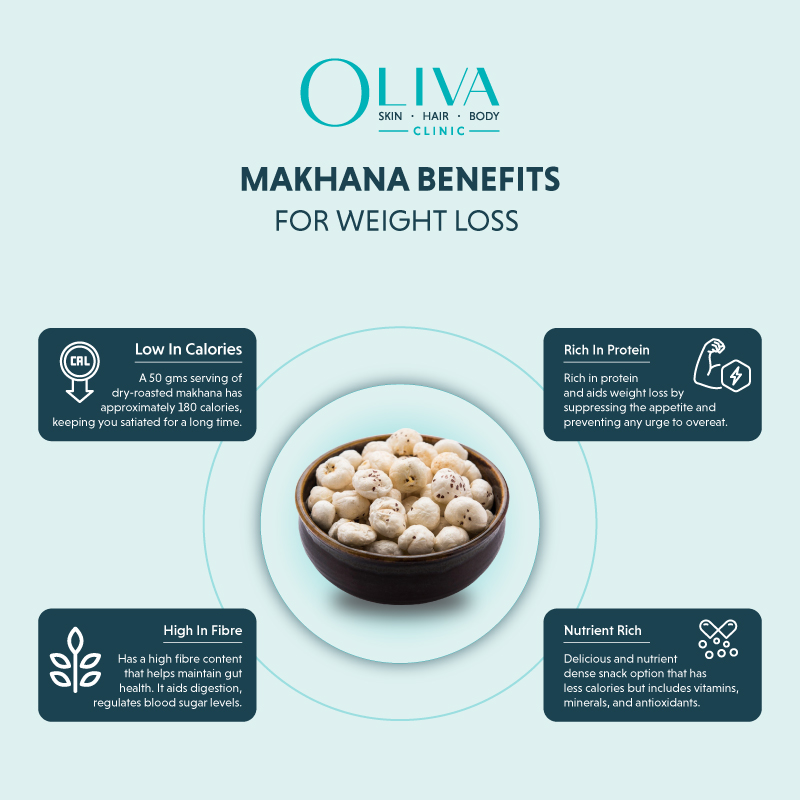Fibers That Can Help You Lose Weight
While there’s no shortage of tips and tricks in losing weight, we often overlook the power of fiber consumption. Including fiber in the diet has proven health and weight loss benefits. This article will help you understand the importance of fiber to lose weight and why you should incorporate it into your weight loss diet plan.
How Fibres Help In Losing Weight?
Eating fiber to lose weight works primarily in two ways: by increasing gut microbiome and enhancing satiety. Foods rich in soluble fiber act as prebiotic and help provide gut bacteria with nutrients. They improve metabolism and our digestive health. Also, eating high-fiber foods accelerates weight loss as they can reduce appetite by adding substance to the diet and promote satiety. You will be eating less, which means that you will reduce your calorie intake and lose weight.
What Type of Fibres Helps You In Losing Weight?
Fibers are essentially carbohydrates your body cannot digest; they are available in two types: soluble and insoluble.
Soluble fiber originates from plants and is a food source for good bacteria in the gut. Upon digesting fiber, short-chain fatty acids are produced which help regulate fat metabolism and lower belly fat.
Soluble fiber acts as a natural appetite suppressant by regulating ghrelin, the hunger hormone. The consumption of fiber-rich food increases the digestion time to promote fullness and reduce appetite.
On the other hand, insoluble fiber is primarily found in whole grains and act as a bulking agent in the food and enhances digestion by easing the food pass through your gut. Plus, it helps in weight management by controlling hunger pangs.
Must Read: How to Lose Weight Quickly in 2 Weeks?
High Fibre Foods That Helps Lose Weight Fast
Check out these high fiber foods to lose weight fast and naturally:
-
Whole Grains:
Whole grains contain a considerable amount of fiber as compared to refined grains. Some examples include steel-cut oats, quinoa, bran, barley cereal, amaranth, brown rice, etc.
-
Whole Fruits:
There is a bulk of soluble fiber in fruits and insoluble fiber in their skin, so it is best to eat them whole without peeling. Raspberries and blackberries are high-fiber fruits with significantly fewer calories. Other fiber-dense fruits include strawberries, passion fruit, guavas, pears, bananas, and pomegranate seeds.
-
Legumes:
Legumes are one of the most popular fiber-boosting foods with high protein content. Black beans, kidney beans, garbanzo beans, split pea, French green beans, lentils, etc., are full of fiber, complex carbs, and proteins.
-
Nuts And Seeds:
Nuts and seeds have plenty of fiber and are a great way to add fiber to any meal. Chia seeds and flaxseeds contain the highest amount of fiber and make for a great snack. Almonds, pumpkin seeds, roasted sunflower seeds, walnuts are rich in fiber and healthy fats.
-
Vegetables:
Vegetables such as artichokes, butternut squash, potatoes, onions, spinach, broccoli, carrots, and green peppers contain high fiber and make for a great meal without adding many calories.
Must Read: Things You Should Avoid To Lose Weight
Expert Tips On High Fibre Diet
Some helpful tips to follow when incorporating high-fiber foods for weight loss:
- It is best to add fiber slowly to your diet. Adding too much fiber too quickly may cause stomach distress in some people who do not tolerate fiber very well.
- Eat whole fruits instead of peeling or juicing them. You will discard valuable fiber and nutrients by doing so.
- Swap refined or processed foods with whole foods that contain a vast amount of fiber.
- Snack mindfully. Snacking on fiber-rich foods such as nuts and seeds instead of fried or packed foods is always better.
- Make sure to drink lots of water while consuming fiber-dense foods to reduce GI distress or bloating.
- Sprinkle seeds such as chia and flax seeds on your smoothies to increase your fiber intake.
- Make sure to track the fibrous foods you eat to understand their benefits and overall fiber intake better.
- You can take fiber supplements, but they don’t promise as many benefits as fiber-dense foods.
Must Read: A Simple 30 Days Meal Plan To Lose Weight
Adding fiber to your daily diet is a great way to reduce and maintain weight loss. It is best to add fiber gradually to your diet and make an informed and long-term decision by consulting a dietitian that aligns with your weight loss goal. Be sure to adopt additional lifestyle changes to get the best results.
Our certified subject matter experts do extensive research and collate facts from reputed scientific journals and international studies to create informative and engaging articles related to all your dermatology concerns. They strive to help you decipher medical jargon, distinguish fact from fiction and overcome paranoia. Our qualified medical board or expert panel goes a step further to verify these facts based on their rich academic knowledge, vast clinical experience and critical industry insights to ensure you consume only medically accurate content that empowers you to make informed decisions about your hair and skin-care treatments and weight management. Check out our Editorial policy for further details
https://www.ncbi.nlm.nih.gov/pmc/articles/PMC6163457/https://www.ncbi.nlm.nih.gov/pmc/articles/PMC4756104/
https://www.ncbi.nlm.nih.gov/pubmed/10721886
https://www.nhlbi.nih.gov/health/educational/lose_wt/eat/diary.pdf
https://www.ncbi.nlm.nih.gov/pmc/articles/PMC5331580/
https://www.heart.org/en/healthy-living/healthy-eating/eat-smart/nutrition-basics/whole-grains-refined-grains-and-dietary-fiber









